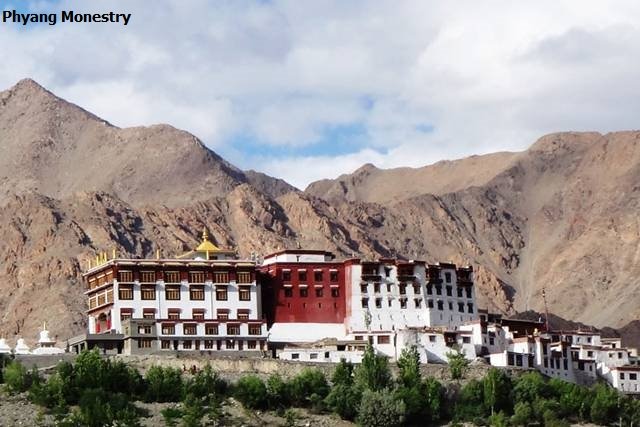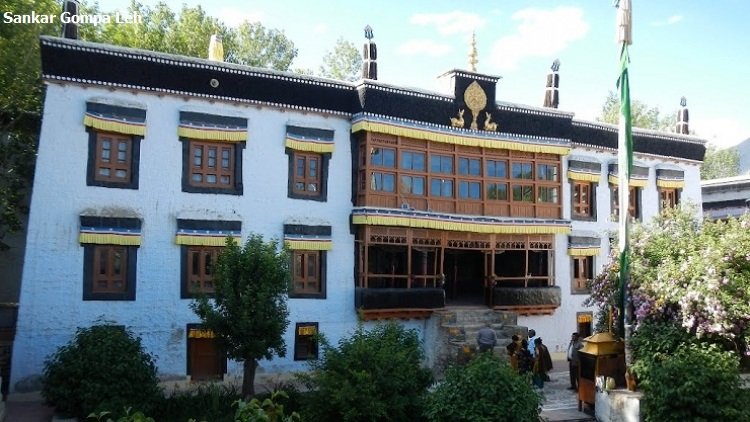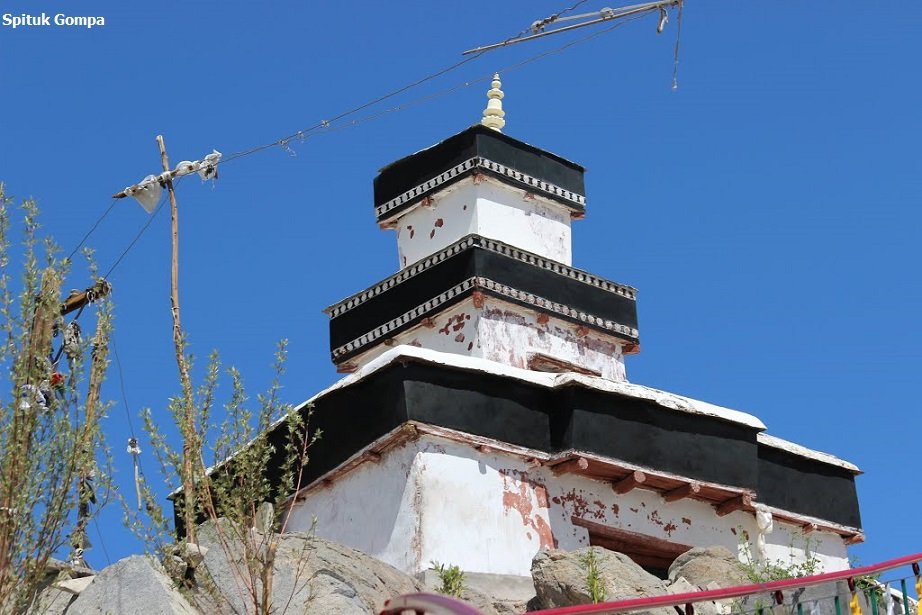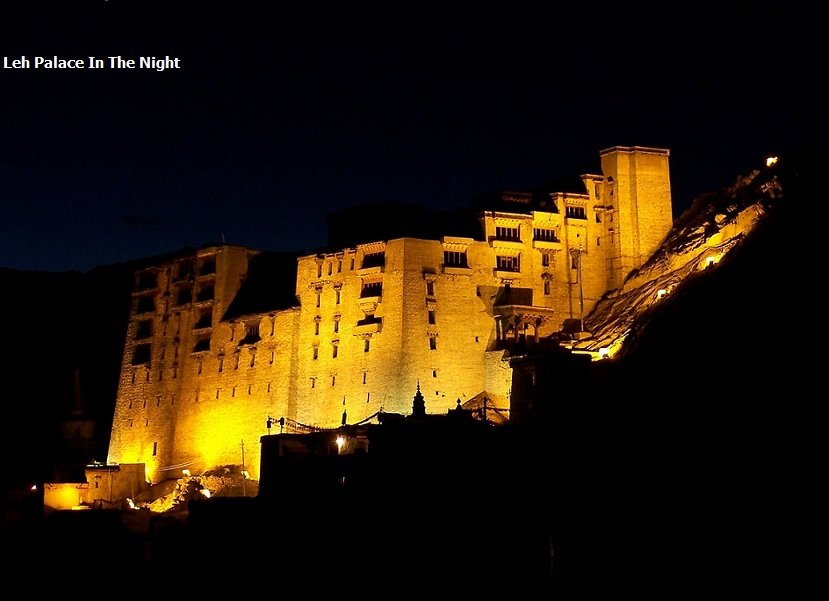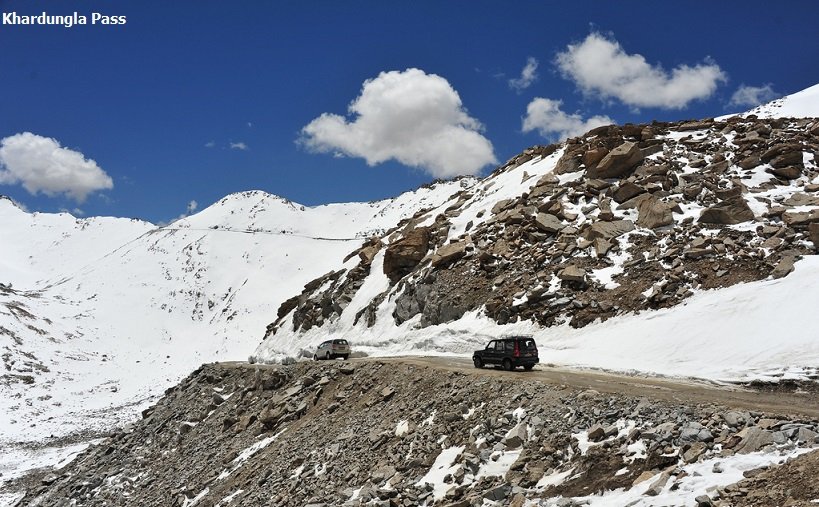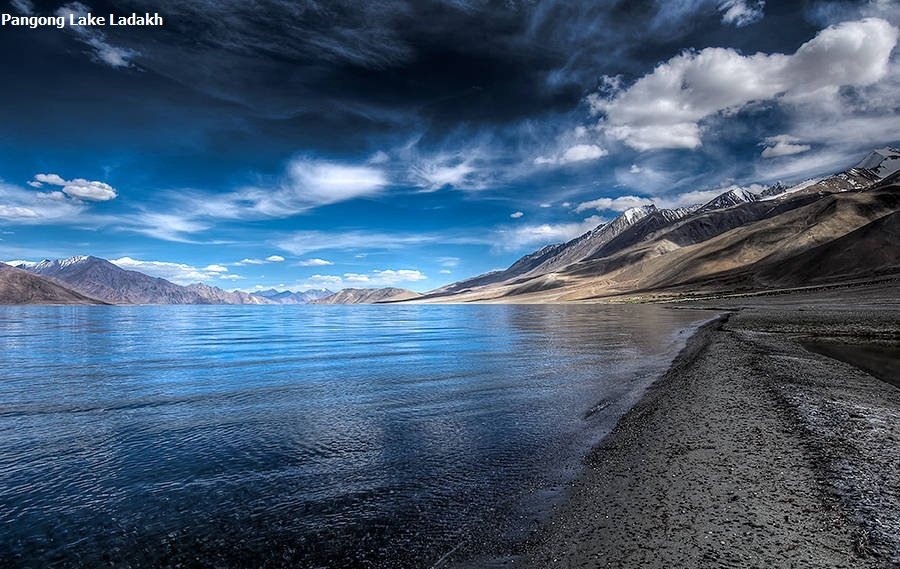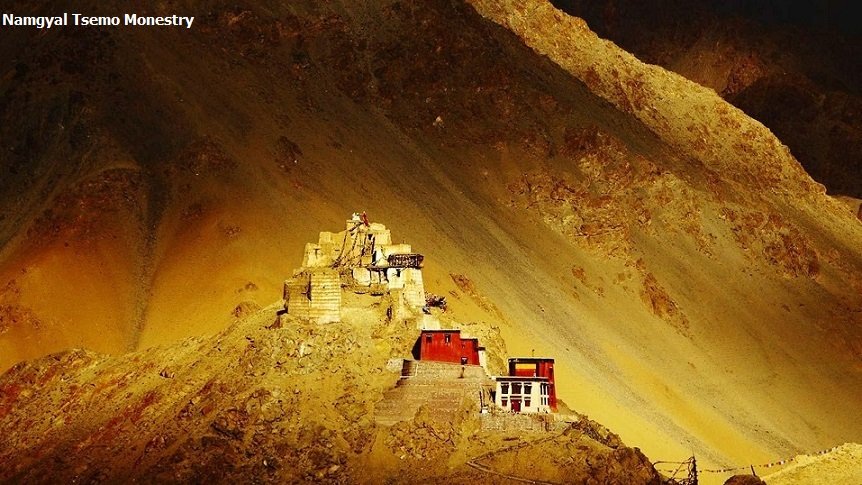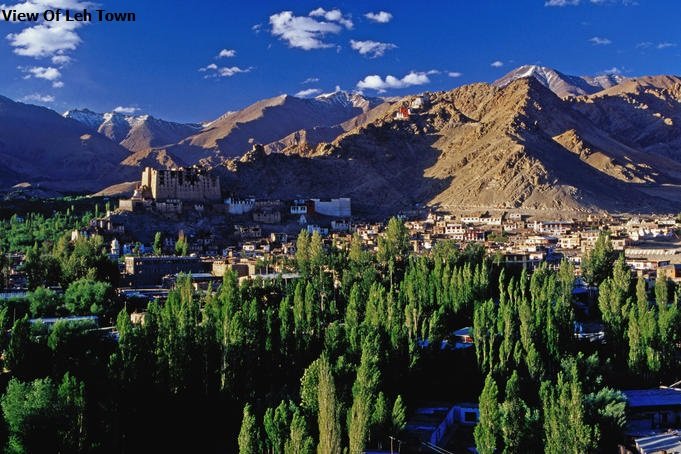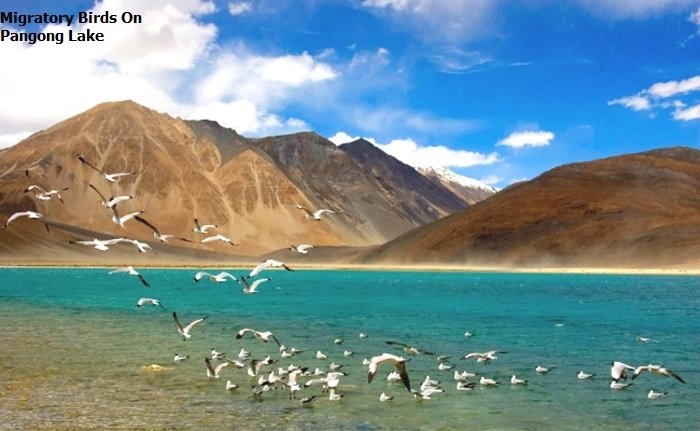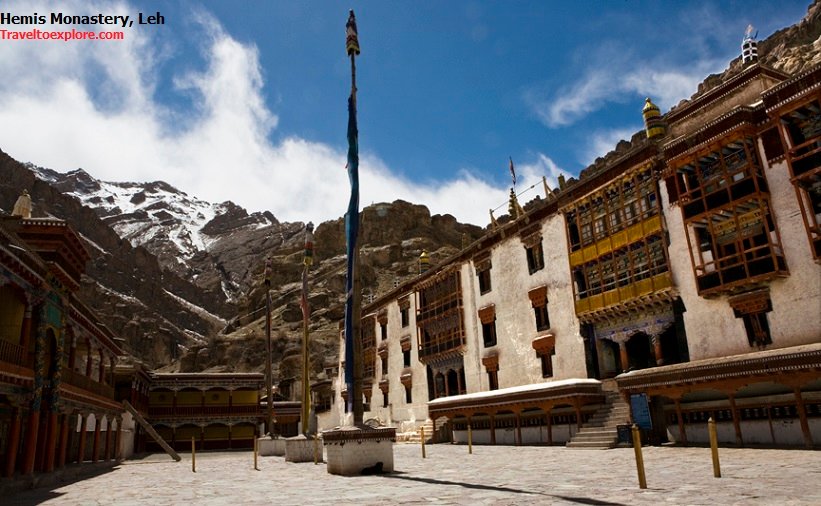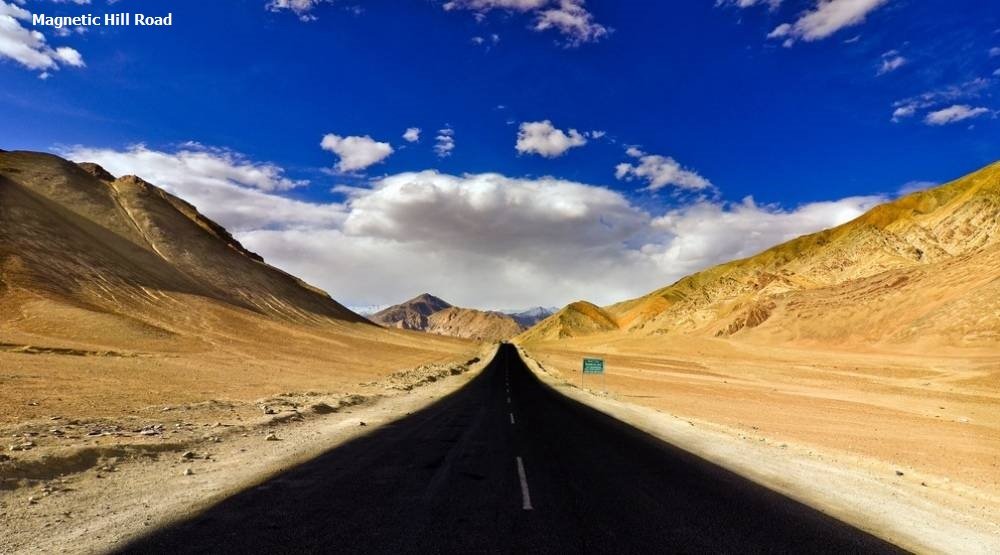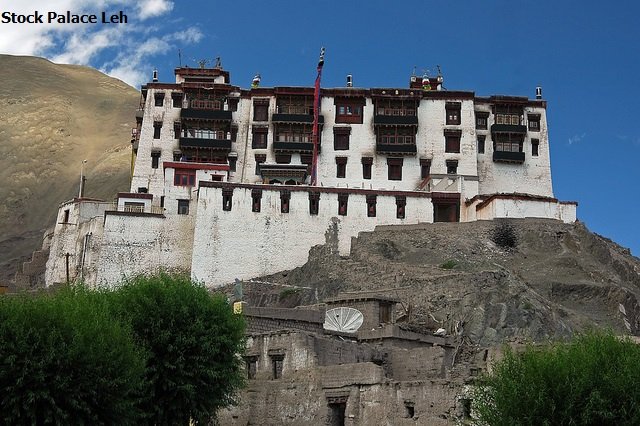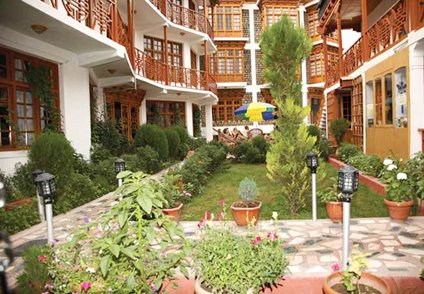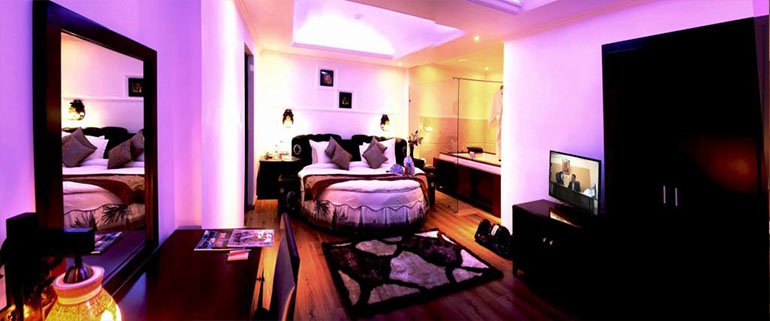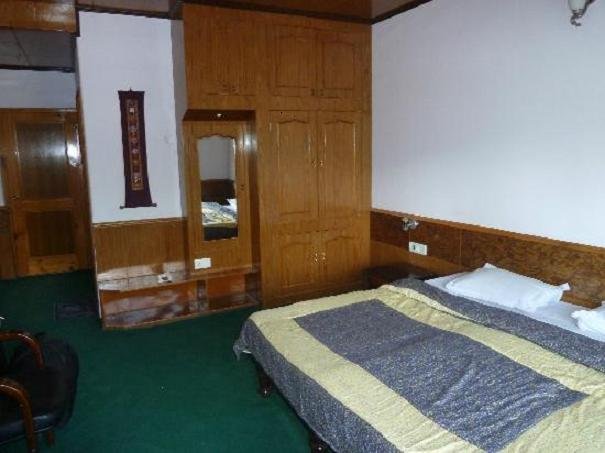Leh
Highlights
Leh is a paradise on earth with its mesmerizing scenic beauty and is blessed with majestic snow laden Himalayan ranges, lush green landscape, sparkling blue waters and deep gorges. Leh the erstwhile capital of the kingdom of Ladakh is now a dream destination of many and the Mecca of adventure enthusiasts, Leh is one of the coldest deserts in the world is located at a distance of 434 Kms from Srinagar and 474 Kms from Manali (Himachal Pradesh). Leh is the headquarter of Leh-Ladakh District and the largest town of the region. It is located to the north of the Indus River at an elevation of 3600m above the sea level. The town is dominated by the Namgyal Tsemo (victory peak) built by King Tashi Namgyal in 16th century, as a royal residence and the nine-storey Namgyal Palace built by King Sengge Namgyal on his victory in reunification of the Upper and Lower Ladakh in 17th century. Leh became the capital of Stod (upper Ladakh) during the reign of King Graspa Bum- Lde, who ruled Ladakh from 1400 to 1430 AD. In the later period, Leh became an important center for trade in Central Asia, along the Indus Valley between Tibet to the east, Kashmir to the west and ultimately between India and China.
Right below Leh Palace is the old mosque, a Sunni Muslim mosque. It was constructed under the threat of military action by the Mughal Emperor Aurangzeb which prompted King Deldan Namgyal to build the mosque in 1661. The mosque reflects a mixture of Islamic and Tibetan architecture and can accommodate more than 500 people.
In 1974 Ladakh was thronged open for foreign tourists. Since then Leh became the centre for tourism related activities in the region and today, Ladakh is among the most preferred tourist destination for foreign as well as domestic tourists.
Leh has a cold, arid climate with long, harsh winter season that is, from October to early March. The winter temperature in Leh dips down at maximum to -29 degree Celsius and during summers the mercury rises to a high of 33 degree Celsius.
Indian nationals DO NOT need any inner line permits to visit Leh - Ladakh region. This rule is effective from 1st May 2014. An Indian national only need to present a valid Photo ID Proof at the ITBP/Army check-posts. ID Proofs such as Driving License PAN Card, etc will suffice to visit any unrestricted region in Leh Ladakh like Pangong Tso Nubra Valley (up to Panamik) Hanu Villages, Tso Moriri etc.
Tourist of foreign nationality must have group permits (for a minimum of 3 people) accompanied by an accredited guide. The permit is issued by a tourist office in Leh for a small fee.
What To See
Leh is a backpacker's haven with numerous trekking trails, valleys, and picturesque lakes. Renowned as the land of monks and monasteries there is lots to see in this amazing piece of land.
Magnetic Hill
Magnet Hill is located near Leh . The “Hill” is located on the Leh-Kargil-Srinagar national highway, about 30 km from Leh, at a height of 11,000 feet above sea level. The Magnetic Hill is having strong magnetic properties which can pull cars, bikes uphill and make Aircrafts go higher in terms of altitude so that they could bypass magnetic interference. Due to this amazing effect, millions of people from all over the world are attracted towards this place.
Khardungla Pass
Khardungla Pass is the highest motorable road in the world. Khardungla Pass is at an altitude of 5,359 meters or 18379 feet and is 39.7 km from Leh. Khardungla Pass is an important gateway to the Nubra and Shyok Valley. The pass is another important gateway to Siachen Glacier. Construction work for the pass began in 1976 and was first opened in 1988. The pass offers amazing views of the valley and the roads winding up the mountain. The pristine air, scenic vistas and the feeling of being on top of the world have made Khardung La a popular tourist attraction. It figures high as a must visit for every tourist visiting Leh. So huge is the tourist rush that traffic jams are inevitable.
Traffic on the road to Khardung La is regulated to ensure smooth flow of vehicles. Vehicles from Leh towards Khardung La are allowed only from nine in the morning to one in the afternoon while traffic from Khardung La towards Leh is allowed to travel via the pass from one in the afternoon to five in the evening. It would always be better to check with local agencies or taxi drivers about the timings.
Pangong Tso Lake
Pangong Lake Situated at a height of 4,250 meters, far away in barren land in Ladakh, Pangong Tso is one of the largest brackish lakes in Asia. The crystal clear blue lake sprawls over an area of 134 kilometers across the borders of two countries in India and China. It is one of the charismatic lakes situated on the Changtang plateau in eastern Ladakh region.
Pangong Lake is also known by the name of Hollow Lake and appears as a clear symbol of nature craftsmanship. The brackish water plays with sunlight to produce different effects of light. One-third part of the lake lies in India while the remaining two-third lies in Tibet, a region controlled by China. A large chunk of streams that fill the lake are located on the Tibetan part. The lake is located just 5 hours drive or 150 Kms from Leh in the Ladakh region of Jammu & Kashmir. The route passes through beautiful Ladakh countryside, over chang La the third highest motorable pass in the world. Traces of snow along the road welcome you. One can cross the valley on sinking road. The mountains in the backdrop appeared to be painted in the colors of green, brown and violet.
Leh palace
Bearing a passing similarity to the Potala Palace in Lhasa (Tibet), this nine-storey dun-coloured palace is Leh's dominant structure and architectural icon. It took shape under 17th-century king Sengge Namgyal but has been essentially unoccupied since the Ladakhi royals were stripped of power and shuffled off to Stok in 1846. Today the sturdy walls enclose some exhibition spaces and a small prayer room, but the most enjoyable part of a visit is venturing up to the uppermost rooftops for the view.
Interesting structures ranged around the palace’s base include the prominent Namgyal Stupa , the colourfully muralled Chandazik Gompa and the 1430 Chamba Lhakhang with medieval mural fragments between the inner and outer walls.
Spituk Gompa
Founded in the late 14th century impressive Spituk Gompa is incongruously perched overlooking Leh’s airport runway around 5km from town. Multiple mud-brick buildings tumble merrily down a steep hillock towards Spituk village on the Indus riverbank. The courtyard below the gilt-roofed Skudung Lhakhang leads to a colourful dukhang (prayer hall) containing a yellow-hatted statue of Tsongkhapa (1357–1419), who spread Gelukpa Buddhism. A Buddha statue across the same room supposedly incorporates a very odd relic: Tsongkhapa’s nose-bleed.
On the very top of the gompa hill is a three-tiered latho (spirit shrine) and the small Palden Lamo temple hiding veiled Hindu-style deities and festival masks in an intimate rear section.
Hemis Monastery
Hemis is mainly known for Hemis Monastery is revered as the largest monastic institution in Ladakh district . The monastery has more than 200 branches with more than 1,000 monks in the Himalayan region.
Situated in the foothills of Indus at a distance of 45 km from Leh, the monastery has access to motorable roads. Travelling to Hemis monastery itself is a thrilling experience and the surroundings make the journey a memorable one.
Hemis Monastry is the wealthiest monastery in India and famous for its rich collection of ancient remnants like the statue of Buddha made of copper, stupas made of gold and silver. Monastery also has sacred Thangkas, murals and various artifacts.
The Tibetan Buddhist monastery belongs to the Drukpa Lineage or the Dragon Order of Mahayana Buddhism. Gyalwang Drukpa, Tsangpa Gyare Yeshe Dorje in founded Drukpa Linegae 13th century. King Sengge Namgyal re-established it in the 17th century.
The Tibetan style architecture of the monastery is very colourful and attractive. It is divided into two parts – the assembly hall known as Dukhang and the temple which is called Tshogkhang. The huge courtyard of the monastery is also worth a visit. All the celebration and public functions are held here. Verandah is decorated with colourful wall paintings of Buddhist Kalchakra. Below the monastery there is Chomoling which is the abode of nuns.
The Hemis National Park, one of the high altitude national parks in the country, is close to the monastery. The park is famous for rare animals like snow leopard.
The Hemis festival attracts lots of tourist from across the world. Thanka of the monastery can be seen during the festival every twelfth year which is a sign of good health and spiritual strength.
Thiksey Gompa
Thiksey Gompa of Ladakh is situated at a distance of approximately 18 km from the town of Leh. One of the most beautiful monasteries of Ladakh, it belongs to the Gelukpa Order of Buddhism. Sherab Zangpo of Stod got the Thikse Monastery built for the first time, at Stakmo. However, later Spon Paldan Sherab, the nephew of Sherab Zangpo, reconstructed the monastery in the year 1430 AD. The new monastery was sited on a hilltop, to the north of Indus River.
Thikse Monastery of Leh Ladakh houses a temple, known as Lakhang Nyerma. This temple, built by Rinchen Zangpo, the Translator, is dedicated to Goddess Dorje Chenmo. A huge temple in its time, today it stands mostly in ruins. Apart from this temple, there are a number of other sacred shrines inside the monastery complex. The monastery also has a rich collection of numerous valuable artifacts and ancient relics.
Shey
Shey, 15-km southeast of Leh and once the capital of Ladakh is now all but deserted, the royal family having been forced to abandon it by the Dogras midway through the last century. Only a semi derelict palace, a small Gompa and a profusion of Chortens remain, clustered around a bleached spur of rock that juts into the fertile floor of the Indus valley.
The ruins overlook the main highway, and can be reached on the frequent minibuses between Leh bus stand and Tikse. Alternatively, one can walk to Shey from Tikse monastery along a windy path that passes through one of Ladakh's biggest Chorten fields with hundreds of white washed shrines of varying sizes scattered across the surreal desert landscape. One can get extremely dehydrated along the 4-km trek so bring plenty of water and a hat.
Shey Palace and Monastery
The palace, a smaller and more dilapidated version of the one in Leh , sits astride the ridge below an ancient fort. Crowned by a golden Chorten spire, its pride and joy is the colossal metal Shakyamuni Buddha housed in its ruined split-level temple. Installed in 1633 at the behest of Sengge Namgyal's son Deldan, the twelve-metre icon allegedly contains a hoard of precious stones, 'Manadalas' and powerful charms.
Entering from a painted antechamber lined with shelves of ancient manuscripts, and exquisite murals, which have been undergoing extensive restoration, one passes through heavy wooden doors to come face to face with the Buddha's huge feet, soles pointing upwards. The customary circumambulation leads around the base of the statue through a haze of incense smoke to total darkness behind.
Upstairs, from a balcony surrounding the statue's torso, one can see the massive Buddha, painted gold with tightly curled blue hair, in better light, and inspect the magnificent paintings of Buddhas, Bodhisattvas, Mahasiddhas and fierce protector deities coating the temple walls. Preserved for centuries by thick soot from votary butter lamps, these are among the finest in the valley, painted in stunning detail and tinted with gold applied with smooth hair fine brush strokes.
The Temple Of Shakyamini
Five minutes walk across the fields from the palace, in the centre of a Chorten strewn plain, stands a temple, enshrining another massive Shakyamuni statue (Daily 7.00 am - 9.00 am & 5.00 pm - 6.00 pm). Best viewed from the mezzanine verandah on the first floor, it is slightly older than its cousin up the hill. The descendants of the Nepali metalworkers who made it, brought here by Sengge Namgyal, still live and work in the isolated village of chilling famous for its traditional silver ware. Downstairs, the Gompa's Du-khang contains dusty old Thangkas and manuscripts.
Namgyal Tsemo monastery
Founded in early 15th century, Namgyal Tsemo monastery in Leh in Ladakh is renowned for its three-storey high solid gold idol of Maitrieya Buddha. Situated on a mountain top behind the Leh palace, the monastery offers panoramic views of the surrounding countryside, the gently flowing Indus river and the snow capped peaks of Zanskar range.
The gompa was founded by King Tashi Namgyal in 1430 AD who was a big follower of Buddhism. As a mark of his respect to Buddhism, the king built the monastery above his palace. Situated at the cliff of Namgyal hill, its architecture is impressive.
View of Leh from the gompa is breathtaking as the view changes with light. The monastery is a favourite with photographers too.
The gompa has assembly hall and temple with frescoes, paintings and statues of Buddhas. The gold idol of Maitreya Buddha (future Buddha) is three-storey high. The monastery is also noted for one-storey high statues of Avalokitesvara and Manjushri.
Down the hill side there is Shankar gompa which is also associated with Namgyal Tsemo monastery. It is a daily ritual followed by monks from Shankar gompa to worship Buddha and light butter lamps at Namgyal Tsemo. Visitors are allowed into the monastery only during morning and evening.
Phyang Monastery
Phyang Monastery of Ladakh is situated at a distance of approximately 40 km to the west of the Leh town. It belongs to the Red Hat Sect of Buddhism. The site where the monastery now stands was once a part of the numerous monastic properties, offered during the time of Dharmaraja Jamyang Namgial to Chosje Damma Kunga. The hill of Phyang served as the venue of a monastery, known as Tashi Chozong, established in the year 1515. A monastic community was introduced to the monastery and with this started, the first establishment of the Digung teachings in Ladakh.
The traditions of the Digung teachings began with Skyoba Jigsten Gonbo. In the present time, the Phyang Gompa of Leh Ladakh is under Apchi Choski Dolma. The monastery is served by the successive reincarnation of Skyabje Toldan Rinpoche. There are a number of sacred shrines situated inside the monastery complex. Also, there are some exquisite wall paintings, dating from the royal period, adorning the monastery.
Another attraction of Phyang Gompa is its 900 years old museum. Its rich collection boasts of numerous idols, thankas, Chinese, Tibetan and Mongolian firearms and weapons, etc. The festival of Gang-Sngon Tsedup is held every year from 17th day to 19th day of the first month of the Tibetan calendar. The monastery also serves as the venue of the sacred dances, held every year on the 2nd and 3rd of the 6th month of the Tibetan calendar.
Stock Palace
Stok Palace, built by King Tsespal Tondup Namgyal in 1825, in the present times is the residential palace of the royal descendants of King Sengge Namgyal. The architecture of this palace is a perfect mix of the traditional and the contemporary architectural styles. This palatial property consists of a number of beautiful gardens as well as a library that has around 108 volumes of the Kangyur (a collection of teachings of Lord Buddha). The palace is located around 15 kms away from the main city of Leh.
This palace hosts an annual dance-mask festival in which there is a huge participation by the locals. There is also a collection of royal clothing, crowns and other important things which you can see while on the excursion of the palace.
Sankar Gompa
Sankar Gompa of Ladakh is located at a distance of approximately 3 km from the town of Leh. A subsidiary of the Spituk Gompa, it belongs to the Gelukpa or the Yellow Hat Sect. The monastery also serves as the official residence of the Ladakh's head of Gelukpa Sect, known as The Kushok Bakul. There are time restrictions for visiting the Sankar Monastery of Leh Ladakh. You can also go either between 7:00 am and 10:00 am, or between 5:00 pm and 7:00 pm.To the right of the front yard of the monastery is the Dukhang (assembly hall). Both the sides of its entrance are adorned with the paintings of the Guardian of the Four Directions. On the left wall of the entrance verandah is a "Wheel of Life", held by Yama. As you enter the Dukhang, you will come across some relatively new paintings of various Buddhas, along with guardian deities. There is also a throne inside the Dukhang, reserved for the head lama of the monastery. On the right-hand side of the throne is an image of Avalokitesvara (Lord of All He Surveys), with 1000 arms and 11 heads.
Shanti Stoopa
Situated at a height of 4,267 metres (13,999 ft), the stupa is located 5 kilometres from Leh on a steep hill facing the Leh Palace. The stupa can be reached by a drivable road or on foot using a series of 500 steep steps to the hilltop. The stupa is built as a two-level structure. In the first level, a central golden Buddha image sits on a platform depicting the “turning wheel of Dharma” (Dharmacakra). The second level has reliefs depicting the “birth” of Buddha, the death of Buddha (mahanirvana) and Buddha “defeating the devils” while meditating. Both levels feature a series of smaller meditating Buddha reliefs.
Festivals Of Leh
Ladakh is a land of several vibrant and colourful festivals celebrated by the monks and local people. The native people celebrate these festivals as per the Buddhist calendar. In order to explore the rich culture of this place, you must participate in the Hemis festival and Losar festival.
Hemis Festival
This festival is celebrated to honour the birth of the guru Padmasambhava, the founder of tantric Buddhism in Tibet. This festival is celebrated annually in the month of June or July.
Losar Festival
It is celebrated in the 11th month as per Tibetan calendar which is 2 months ahead of New Year.
Shey Festival
In July the Metukba festival takes place in the Shey Gompa with one day of prayers for the well being of all life in the entire world. The upper chapel of the Shey Gompa is used for everyday functions; it surrounds the Buddha figure's head as a sort of balcony. The lower, somewhat larger, chapel houses a large collection of Thankas and a library. All the old Thankas bear the stamp of the 'Gompa Association, Ladakh '.
The best time to visit the Shey Gompa is between 7.00 and 9.00 am or 5.00 and 6.00pm since the monks perform their prayer devotions at these times. The Gompa is usually closed to the public at other times. Near Shey there is a field with an impressive collection of hundreds of small Stupas and Mani Walls.
What To Do
Camel Safari
Camel Safari is the great way to traverse in the valley of Ladhakh wrapped up in the lap of nature surrounded by the magnificent hills and green landscape, this should be included in list of things to do in Leh.
Camel Trekking or Caravan with camels has been a vogue for Ladakh quest since Seventeenth century until partition was done in the year of 1947. Camel Travelling is predominantly evident in Nubra Area from Hundar up to the Diskit. Bactrian camels, along with dual humps, are basically also recognized as the 'Real Camel'. Bactrian camels are classified as herbivores. They prefer vegetation that is prickly, dry, salty, and/or bitter. However, when food is scarce they will eat bones, and various types of animal flesh. The offspring of those camels were used for riding and transportation in the 'Silk Route' in the consecutive centuries of 17th, 18th and 19th.
Jeep Safari
An enthralling jeep safari on the scenic landscape of Ladakh is absolutely fun and exciting. Since the Leh Ladhakh region is so vast and well spread, you will have to travel several 100 miles to explore it, then the best way is to hire a Jeep which will make your journey relaxing and comfortable.
Trekking
Something to be included in things to do in Leh list is trekking or mountain climbing. Leh and the surrounding regions in Ladakh is a haven for mountain climbers with its unique charm and natural beauty. Hiring a local guide or sherpa is highly recommended before venturing out to conquer the mountains.
Motor Biking or Cycling
Motor Boking or Cycling on the rocky trails of this beautiful place is a unique experience which you will remember throughout your life. You can Hire a bike and hit the road of Leh and explore the surrounding regions. Riding around this region is a truly hair raising experience. Traveltoexplore arrange and organise such tours for Leh Ladhakh.
Paragliding
Fall free with the cool breeze blowing across your hair, experience the view of the clear sky, the snow capped peaks and the huge green landscape adorned by rivers. This region offers some of the best views.
Paragliding shows you the best of beautiful Leh, hence including this in your things to do in Leh becomes inevitable.
Bird Watching
Leh Ladhakh is an ideal place for bird watching, the high altitude wetlands of Ladakh are a favoured destination for a lot of birds, many of which are endangered.
How To Reach
By Road
There are two different rute to reach Leh via road one is from Srinagar and second is from Manali.
Srinagar to Leh
One Can Reach Ladakh from Kashmir Valley through Kargil, which is around 434 kms. This route remains open from early June to November. Zoji-La pass of the Himalayan ranges that is a gateway to Ladakh is approximately 11,500 feet (3,505 m high) above the sea level. J & K State Road Transport Corporation, J&K SRTC, runs regular deluxe and ordinary bus services between Srinagar and Leh. There's a night stay in Kargil. You can also hire cars, jeeps or taxis in Srinagar. If traveling in groups, you can rent deluxe buses for Leh, Kargil or Padum (Zanskar) from J & K SRTC at Srinagar.
Manali To Leh
from Manali Leh is 473 kms, since 1989 it has been another route to Ladakh. This route is open from mid-June to early October. The road passes through the desert plateau of Rupsho and is around 3,660m to 4,570m high. There are a number of high passes falling on the route, Taglang-La being second highest motorable road in the world, 17,469 feet (5,235m) above the sea level. Himachal Pradesh Tourism (HRTC) and J & K SRTC run daily deluxe and ordinary buses between Manali and Leh, that takes around 48 hours (or two days) with night halt in camps at Serchu or Pang. You can also hire a Gypsy or jeep taxis.
By Air
Kushok Bakula Rimpochee Airport of Leh is the main airport of the area. The flights are directly connected from Delhi, Srinagar and Jammu; by the flights run by Air India, Go Air and Jet Airways. The schedules are set already though, but these are subject to change according to the weather. It is advised that you keep your plans flexible.
Gallery
Related Package
No Package available
Related Hotel
Reviews
Excellent
4.6 / 5.0
90% recommend this package
Score Breakdown
- (58)
- (132)
- (89)
- (58)
- (9)
Average Rating For
- Cleanliness 4.5
- Service 4.5
- Comfort 4.2
- Condition 3.8
- Neighbourhood 4.4

